Last Chance to Catch NYC's Holiday Notalgia Train
We met the voices of the NYC subway on our nostalgia ride this weekend!


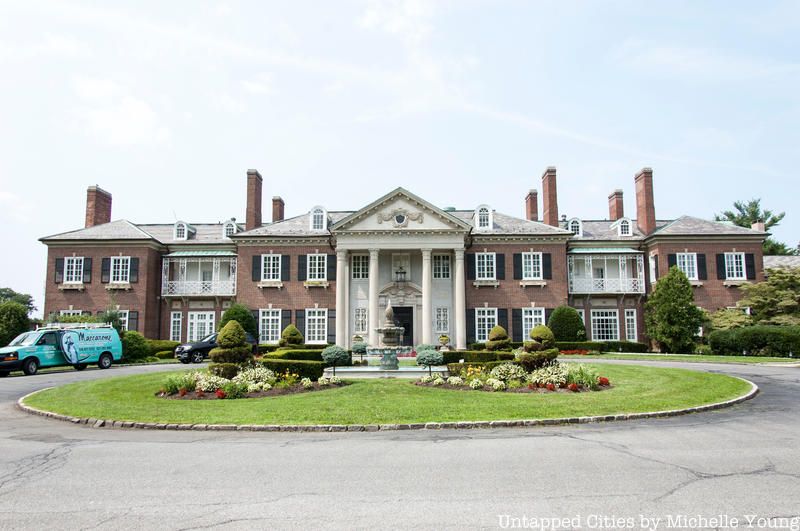
Glen Cove Mansion
New York City officially reopens today, but Nassau and Suffolk counties reopened for phase 1 on May 27th. Although most beaches are closed to New York City residents, many downtowns and parks across Long Island are opening up. In Nassau County specifically, many restaurants have been reopening for takeout and delivery across the county’s two cities, three towns, 64 villages, and over 100 unincorporated areas. And phase two of reopening for Nassau County is expected to begin this week, which will include outdoor dining.
For those looking to escape the city for a weekend and explore Long Island, here is our guide to Nassau County’s must-see areas.
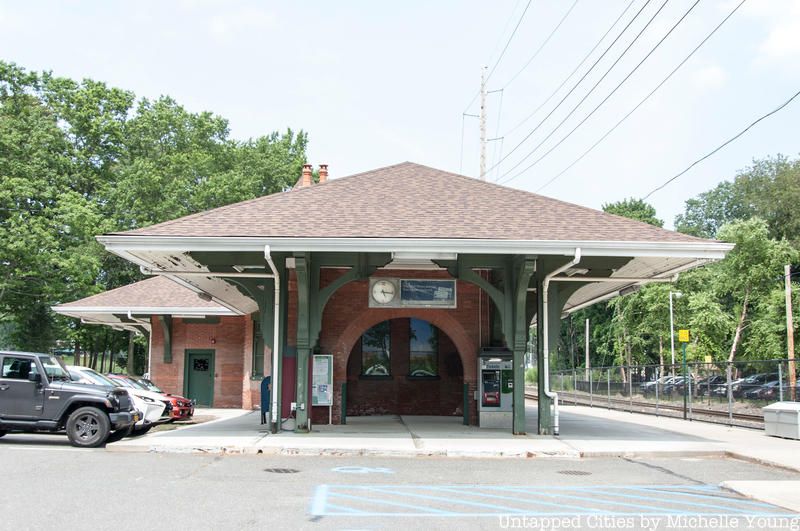
Glen Cove is served by the Long Island Railroad
The City of Glen Cove is one of the most diverse communities in Nassau County. Glen Cove was part of the North Shore’s Gold Coast, which attracted wealthy barons like J.P. Morgan, Charles Pratt, and F.W. Woolworth. The city grew in part due to its manufacturing scene at sites like the Duryea Corn Starch factory. Above, the Glen Cove Mansion at 200 Dosoris Lane, once known as “The Manor,” belonged to John Teele Pratt, an attorney and executive for the Standard Oil Company, and Ruth Baker Pratt, the first Republican congresswoman from New York state. Killenworth, George DuPont Pratt’s estate, was eventually purchased by the Soviet Union, and Nikita Khruschev and Fidel Castro both stayed at Killenworth while visiting the United Nations.

Today, the city boasts a thriving downtown with a number of historic sites and natural features. Glen Cove features a number of historic mansions and estates like “The Manor,” and a number of properties like the U.S. Post Office built during the Great Depression are listed on the National Register of Historic Places. Although most are for residents only, Glen Cove is home to three public beaches (Crescent, Morgan & Pryibil) and three public parks (Stanco, Dennis Brian Murray (Leech Circle) & Big Ralph). Glen Cove is also home to Welwyn Preserve, which originally housed the estate of oil industrialist Harold I. Pratt. The preserve houses a butterfly garden, salt marsh, and the Holocaust Memorial and Tolerance Center of Nassau County. Although currently closed, Glen Cove is also home to the Garvies Point Museum, a center for research on Long Island geology and Native American archaeology.
Glen Cove’s downtown is rather extensive, featuring dozens of restaurants and stores doing curbside pickup. Popular eateries range from Meritage Wine Bar to Sopah Thai Kitchen to Riviera Grill. For a taste of authentic Central and South American food, El Tazumal serves up Salvadoran cuisine while Punto Rojo Cafe offers Colombian fare.

Raynam Hall in Oyster Bay
Oyster Bay, a hamlet in the Town of Oyster Bay, is a mix of old and new like much of the North Coast, with a rather modern downtown juxtaposed with historic homes and structures. Oyster Bay was settled by the Dutch in the early 1600s and by the English in 1653 under Peter Wright. The area soon became a Quaker community home to brothers John and Henry Townsend, and founder of Quakerism George Fox visited Oyster Bay near Mill Pond. Oyster Bay’s Raynham Hall served as British headquarters during the Revolutionary War, and Major John Andre often visited Lt. Col. John Graves Simcoe at the home. You may recognize the names Townsend, Andre and Simcoe from the AMC show TURN, about the first spy ring in America. Oyster Bay is perhaps best known today as the home of president Theodore Roosevelt, who lived at Sagamore Hill in present-day Cove Neck, a neighboring village. Typhoid Mary also worked for a wealthy family in Oyster Bay in 1906 before infecting six people with typhoid fever.

Sagamore Hill, home of Theodore Roosevelt
Roosevelt’s legacy reflects heavily throughout Oyster Bay, including Theodore Roosevelt Memorial Park which includes the Theodore Roosevelt Monument Assemblage, a collection of 24 stones and plaque that represent “chapters” and together form a “book” of Roosevelt’s life. A number of Roosevelt-related landmarks at places like Snouder’s Drug Store still remain. For both history buffs and those looking to learn more about Oyster Bay’s history, the village erected the Oyster Bay History Walk, a 1-mile loop that covers around 30 historic sites like Moore’s Building, the Oyster Bay Bank Building, the Waterfront Center, and the Octagon Hotel. Other significant historic sites include Christ Church (Roosevelt’s family church established in 1705), the US Post Office building, and the Ludlam Building. Oyster Bay is also home to a number of parks including Tiffany Creek Preserve and Beekman Beach. If Gilded Age mansions are your thing, another can be found at the Coe Mansion at Planting Fields.
In addition to its rich history, Oyster Bay also features a number of creative and ethnic eateries near the water, including Wild Honey, an American seafood restaurant. Popular American eateries range from 2 Spring to Coach Grill & Tavern, while Italian restaurants include Pietro’s Brick Oven Pizza and Autentico. Oyster Bay’s downtown also features some ethnic options like Home Sweet Home, which serves Chilean fare, Nikkei of Peru, offering Japanese-Peruvian fusion, and Lourdes Mexican Grill.
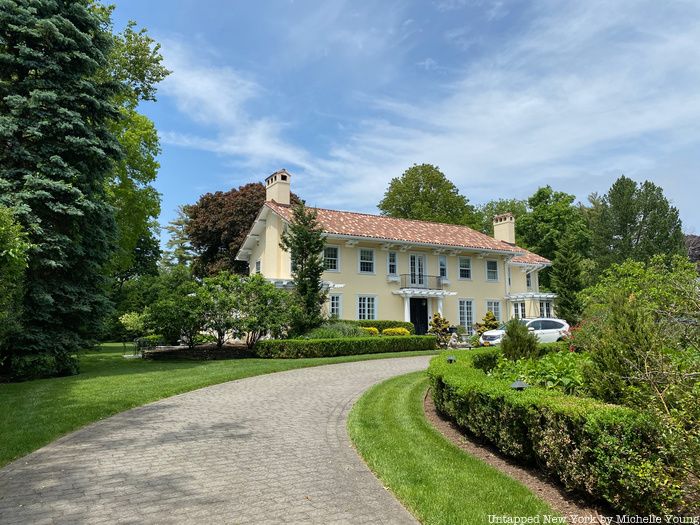
Stewart Avenue in Garden City features many unique, grand homes
Garden City, primarily in the Town of Hempstead, is one of Nassau County’s most historical areas, with plenty of landmarks as well as a more modern downtown. Unlike many other settlements in the county, Garden City was established by a millionaire, Alexander Turney Stewart, as a means of erecting tenement houses, public charities, attractive buildings, and extensive roads.
At the time, Hempstead Plains was sparsely populated, and Stewart saw an opportunity to develop the area, especially with the construction of the Garden City Hotel. It cost Stewart $150,000 to build the original hotel, and McKim, Mead and White designed a new one in 1895, which burned down four years later. The hotel has featured guests like John F. Kennedy, Margaret Thatcher, and Hillary Clinton. Garden City soon became home to a number of major companies like publisher Doubleday, Page, and Co., and many Victorian and more modern homes were constructed.
Charles Lindbergh actually departed on his solo transatlantic flight from Roosevelt Field in Garden City, which would later become the Roosevelt Field Mall. Unfortunately, Garden City’s Merillon Avenue Station was also the location of the 1993 Long Island Rail Road shooting, in which Colin Ferguson murdered six people and wounded nineteen others.
In addition to Roosevelt Field Mall, Garden City is still home to around 50 A.T. Stewart Era Buildings built from 1871 to 1893, including St. Paul’s School and the Apostle Houses, each with around 16 rooms. Another of those buildings in the Cathedral of the Incarnation, built in the Gothic Revival style. The village is also home to the remains of the Mitchel Air Force Base, which was decommissioned in 1961. In addition to housing Adelphi University, Garden City is also home to Museum Row, which includes the (currently closed) Long Island Children’s Museum, the Nassau County Firefighter’s Museum, and the Cradle of Aviation Museum. The village is also home to a number of parks including Community Park, Edgemere Park, and Stewart Field.
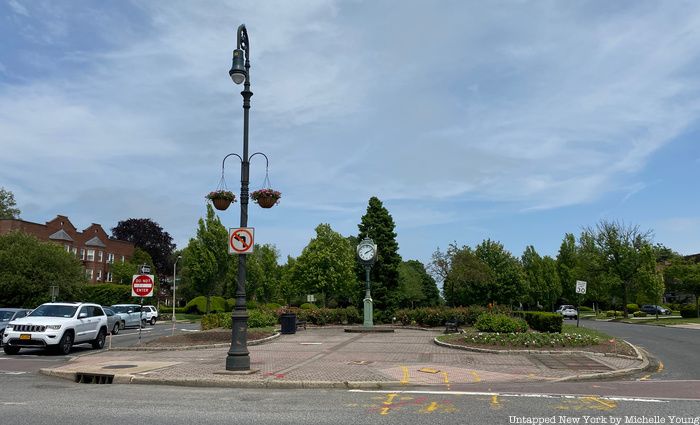
Garden City’s downtown is mainly centered around a few blocks of Franklin Avenue and features a rather diverse array of food options. Perhaps best known in Garden City is Waterzooi, a Belgian bistro and oyster bar popular for their variety of Moules Pots, or mussels prepared in everything from creamy lobster sauce to tarragon champagne broth. Garden City is not the most affordable dining destination in the county, but the village features a selection of Italian, American, and Japanese eateries, with notable eateries including Plancha Tapas and Wine Bar, Revel Restaurant and Bar, and Smok-Haus.

With a population of over 24,000, Rockville Centre is one of Nassau County’s largest villages with a bustling downtown. Bordered by Lynbrook and Oceanside, Rockville Centre is not too frequently visited by New York City residents, but the village has a large selection of shops, restaurants, and parks for an escape from the city. Rockville Centre was previously a Lenape settlement in the 1600s, but many of these Lenape were pushed out of their homeland by the Dutch and English. The village gained its current name from Methodist preacher Mordecai “Rock” Smith, and by the early 1900s Rockville Centre became a commuter town that was affordable for many people with easy city access.
Rockville Centre was also a major hub of the Civil Rights Movement on Long Island, in opposition to the considerable number of KKK supporters living in the village. Supposedly in 1923, the KKK put a wreath on the town’s war memorial, but the American Legion removed it in protest. In the 1960s, the village was accused of failing to maintain proper living standards for African Americans, and in 1968, Martin Luther King Jr. visited Rockville Centre to speak to a large audience at South Side Junior High School.

The Golden Reef Diner in Rockville Center
Rockville Centre is home to a number of parks and nature preserves, including Morgan Days Park on Smith Pond, Mill River Complex Park, and Tanglewood Preserve. The village also houses the Phillips House Museum, a restored Victorian-era home dedicated to depicting life in Rockville Centre during the 19th and 20th centuries. According to Newsday, Rockville Centre has around 100 active restaurants, and the village is in the process of renovating its downtown by burying power lines, rebuilding roads and sidewalks, and installing new lights and decorations. The village is often considered an urban suburb and a “mini-Manhattan” due to its eclectic downtown yet Tudor and Victorian houses.
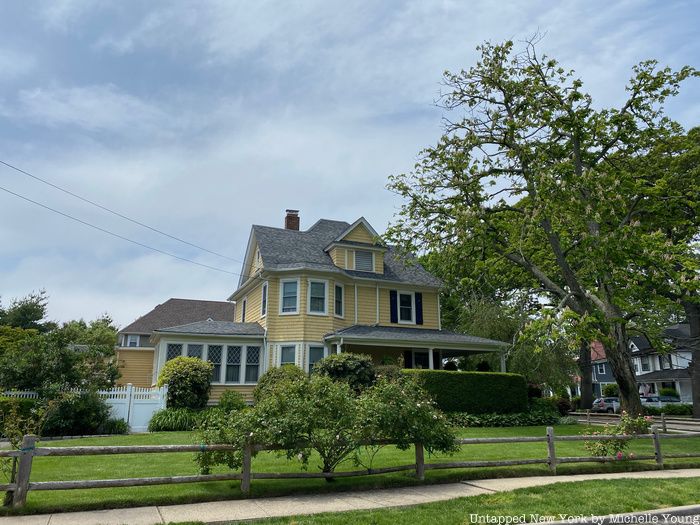
Living up to its urban atmosphere, Rockville Centre’s food scene is vibrant and creative, with a mix of old-time favorites and more contemporary eateries. The area is home to an abundance of Asian eateries, ranging from 8 Ramen to Tum Thai Cuisine to Kashi Japanese. Due to its proximity to the water, seafood features prominently on the menus of long-time favorite Bigelow’s New England Fried Clams and Cajun restaurant Voodoo Crab. Blue Moon and Nick’s serve up classic New York-style pizza, while Dodici and Viaggio offer a more modern take on Italian cooking. Taverns and bars like The Dark Horse Tavern have flourished in the village, and coffee shops like Kookaburra Coffee have been popping up over the last decade. Other restaurants to note include Mexican eatery Mesita, sandwich shop Press 195 (with a location in Bayside), and Dominican restaurant Punta Cana Grill.

The Merchant Marine Academy in Kings Point, Great Neck
Great Neck, on Long Island’s North Shore, includes nine villages like Kensington, Saddle Rock, and Kings Point, and is one of the most culturally diverse places in Nassau County. With high demographics of Iranians and Chinese families, the area has become both an unofficial Chinatown and a little Iran. Great Neck rose to fame after F. Scott Fitzgerald’s The Great Gatsby was published, with “West Egg” representing the affluence of the peninsula.
Great Neck was originally inhabited by Mattinecock Native Americans, who referred to the peninsula as Menhaden-Ock. That name later evolved into Madnan’s Neck, which supposedly comes from a nickname given to the Puritan Anne Hutchinson, who tried to establish a settlement in Kings Point. Early on, the local government was very strict, establishing a liquor tax and a religious code of ethics. Once Madnan’s Neck gained political and economic independence from the rest of the island, technology like a grist mill was established, and modern-day Great Neck grew into a commuter town after the New York and Flushing Railroad opened.

Former UN temporary headquarters
Great Neck was a major hub in the Roaring Twenties, with figures like the Marx Brothers and Eddie Cantor bought homes in Great Neck. By the end of World War II, the area became a haven for Ashkenazi Jews. The United Nations also had its temporary headquarters in Lake Success, in the southern part of Great Neck, from 1947 to 1952, during which Eleanor Roosevelt led the UN Commission on Human Rights. A large influx of Persian Jews settled in Great Neck following the 1979 Islamic Revolution.

Saddle Rock Grist Mill
From the mansions and ornate homes of Kings Point to the views of Manhattan from a number of parks, Great Neck has quite a lot to explore. Parks like Great Neck Estates Park and Steppingstone Park are typically only open to residents during the summer, but others like Kings Point Park (which has a number of hiking trails), Grace Avenue Park, and the Village Green are open to everyone. Great Neck is also home to the US Merchant Marine Academy (which has one of the lost eagles of Penn Station) as well as a number of other places to see the water like the Saddle Rock Grist Mill. Great Neck also features a number of public artworks, including the Handful of Keys mural in its downtown by the Gold Coast Arts Center and a giant giraffe statue in Kensington. There are at least 15-20 synagogues within Great Neck as well, each with different architectural styles.

Kings Point Park
Great Neck’s food scene features a wide variety of cuisines, from Persian to authentic Chinese to Israeli. Perhaps best known is Peter Luger Steak House, with a location in Williamsburg, as well as Morton’s The Steakhouse with locations across the U.S. The north of town features predominantly Kosher eateries like Persian restaurant Shiraz and Bistro Burger, while the main downtown houses a number of Israeli places like Grill Time and Noir Bakery & Cafe. Chinese eateries like New Fu Run, Kitchen Melody, and Coco Palace serve up spicy dishes from places like Dongbei and Yunnan. More upscale Asian places like Soku Asian Fusion, Zen Garden, and Shoshaku take on more modern approaches to Chinese and Japanese fare. Other notable restaurants include long-time favorite Kensington Kosher Deli, French bakery Marie Blachère, and La Rotonda.

Execution Rocks lighthouse
Port Washington, consisting of the four villages — Baxter Estates, Manorhaven, Port Washington North and Sands Point — is one of the most affluent communities in Nassau County. It has a lively downtown, numerous marinas and parks, and beautiful scenery. Baxter Estates acted as a homestead settlement in 1673 known as “Cow’s Neck,” and in 1741, Oliver Baxter purchased the property, which at the time was believed to have been the location of a Matinecock Indian village. During the Revolutionary War, Hessian troops were quartered at the Baxter house.
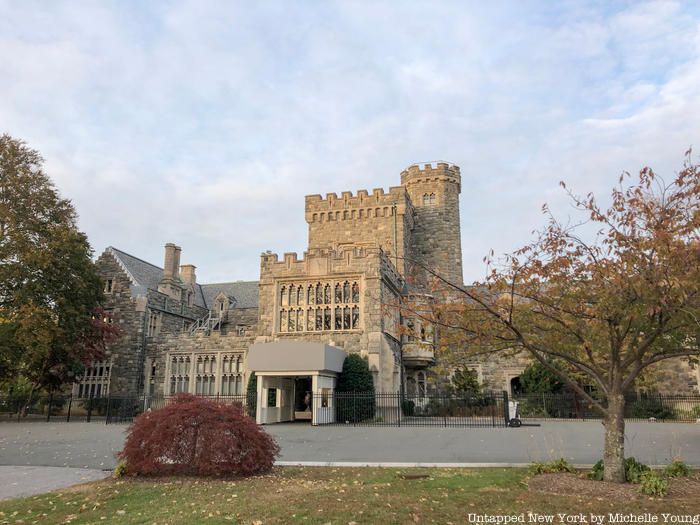
Hempstead House at Sands Point Preserve
By the 1870s, Port Washington became a significant sand-mining town with easy access to Manhattan, and figures like the Vanderbilts and mining magnate Daniel Guggenheim built properties in Sands Point. The area quickly became a wealthy, historic community with a number of buildings now on the National Register of Historic Places.
Today, Port Washington offers scenic views of both the water and a number of historic sites like the John Philip Sousa House, where the famous composer lived for the last 20 years of his life, and the Thomas Dodge Homestead, dating back to 1721. Other notable sites on the NRHP include Execution Rocks Lighthouse, Sands-Willets Homestead, and the Monfort Cemetery, containing the graves of some of the earliest Dutch settlers of Cow’s Neck.
 Bar Beach
Bar Beach
Port Washington is home to a number of parks like Blumenfeld Family Park, Bay Walk Park, and Bar Beach. Sands Point Preserve also houses the Hempstead House, consisting of two castle-like buildings. Sunset Park, right by the Tugboat Museum, is a fantastic place to eat ice cream and watch sunset on the marina.
Port Washington’s Main Street is one of the longest and most built-up in Nassau County, with a few dozen restaurants and shops. For a taste of Italy, Salvatore’s Pizza on Shore Road offers classic pies and other casual options, while DiMaggio’s Trattoria has a rustic feel with traditional Italian fare. Seafood options range from Butler’s Flat to Louie’s Grill & Liquors to French eatery La P’tite Framboise. Port Washington houses a number of Japanese eateries like Restaurant Yamaguchi, Hana, and Bonsai, as well as Thai eateries like Port Thai Place and Chinese options like Dynasty and New Garden Restaurant. Other notable spots include Bosphorus Cafe Grill, Indian restaurant Diwan, and Wild Honey on Main.

Westbury is a very diverse village in North Hempstead that many Nassau County residents don’t speak about too much, but the area is home to large populations of Hispanic Americans, Caribbeans, and Arab Americans. Westbury used to be a Quaker community in the mid-1600s after Captain John Seaman purchased 12,000 acres of land from the Algonquian Tribe. Westbury was named by Henry Willis in 1675 after his hometown of Westbury, Wiltshire. The Quakers in the community freed all of their slaves in 1775 prior to the start of the Revolutionary War, and many of the village’s residents would later attend the Westbury A.M.E. Zion Church. Many British soldiers and Hessians inhabited homes in the area during the Revolutionary War, and the nearby hamlet of New Cassel took its name from the state of Hesse-Cassel where many of the Hessians lived.
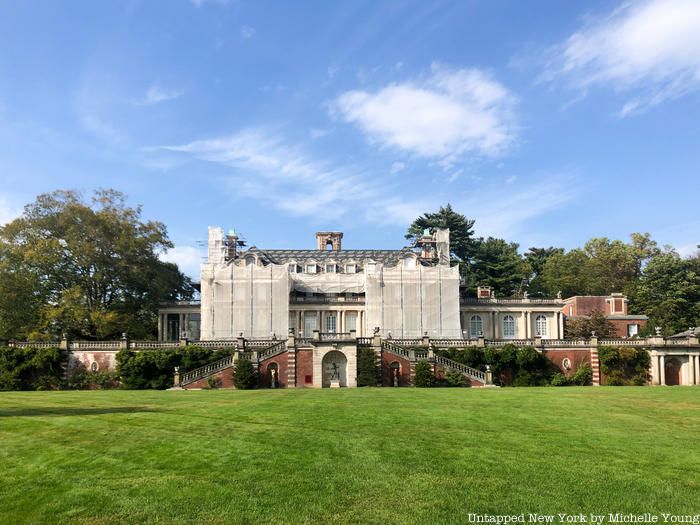
By the time of the Civil War, many slaves settled in Westbury after traveling on the Underground Railroad, and by the late 1800s, many wealthy people began building mansions in Old Westbury. Supposedly, during World War II, approximately 20% of Westbury’s population served on the battlefield. Following the war, many Caribbean and Latin American families began to settle in the area, and today Westbury’s downtown is dominated by these cultures.
Westbury is home to Old Westbury Gardens, the former estate of businessman John Shaffer Phipps that was later converted into a museum. The mansion was built in the Carolean style by George A. Crawley, and the mansion contains a painting by John Singer Sargent of Mrs. Henry Phipps and Her Grandson Winston. Westbury is home to part of the 930-acre Eisenhower Park, previously known as Salisbury Park, which is larger than Central Park and contains the September 11th Memorial for residents of Nassau County. Other smaller parks in Westbury include the Westbury Community Center and Martin Bunky Reid Park. Westbury’s downtown is home to the Theatre at Westbury, which has featured performers such as The Doors, The Who, Frank Sinatra, and Bruce Springsteen.
Westbury’s restaurant scene is mostly divided between Old Country Road, with more upscale eateries, and Post Avenue, with more culinary diversity. Right on the border with Carle Place are eateries like Cafe Baci, serving classic Italian cooking, the world-famous Vincent’s Clam Bar, Havana Central, and Colombian restaurant Pollos El Paisa. Post Avenue is the location of popular eateries like Kabul Kabab House, serving Afghani cuisine, Punta Cana Dominican Grill, and village favorite Little Mexico. Post Avenue is also home to more obscure eateries like Nopal, a pupuseria, Deli Salvadoreño, and Rosita Mini Grocery Corp.

The Barn in Hewlett is a drive-in grocery, seen in many towns through Long Island
The Five Towns are an informal group of five villages and hamlets on the South Shore in the Town of Hempstead, consisting of Cedarhurst, Lawrence, Woodmere, Inwood, and Hewlett. The grouping of the Five Towns dates back to 1931 with the creation of the “Five Towns Community Chest” as a means for charitable giving. Each one of the Five Towns has its own personality, but the Five Towns are said to mimic the North Shore’s historic Gold Coast with rather wealthy areas with a lot of history. The Five Towns also have one of the largest Jewish communities in New York state, with a number of Hebrew academics and Jewish institutions as well as publications like the Five Towns Jewish Times.
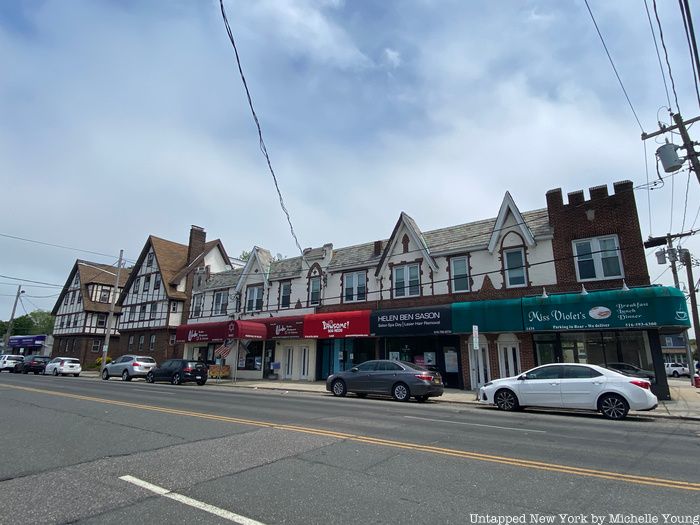
On the left is Woodro Kosher Deli in Hewlett
Much of the Five Towns still retains its rather rural character, especially in Lawrence with historic buildings like Rock Hall dating back to 1767. Back in the 1800s, many residents of the modern-day Five Towns were fishermen, and by World War I, the area had attracted many Italian and Albanian families. Inwood also was the home of the 1921 PGA Championship and the 1923 U.S. Open at the Inwood Country Club. Today, the area features a number of green spaces like Cedarhurst Park, Grant Park, and Inwood Park.

The five towns each have their own downtown areas, all of which are rather lively everyday except Saturdays, as much of the population is observing Shabbat. In Lawrence on Central Avenue are Kosher options like Traditions Eatery and Prime Bistro Steakhouse, while further down the road in Cedarhurst are Cork & Slice, Chimichurri Charcoal Kitchen, and Doma Land + Sea. In addition to a number of Kosher eateries, Inwood features a hidden gem called Tropical Restaurant #5, which serves Ecuadorian fare. Hewlett is home to a number of community favorites like the sushi bar Xaga, Wall’s Bake Shop, and Da Nicola along Broadway, and further down Broadway in Hewlett are popular eateries like XO Sushi and Gotta Getta Bagel.

Photo by Janet Kim for Untapped New York
On the South Shore, Long Beach is Nassau County’s only other city, housing a 2.25-mile boardwalk and beach, a vibrant downtown, and a diverse population. Originally inhabited by Rockaway Indians, Long Beach began to grow in the late 1800s after the creation of the New York and Long Beach Railroad in 1880, which connected it to Lynbrook. In 1906, William Reynolds planned the construction of Long Beach after developing four Brooklyn neighborhoods and Coney Island‘s Dreamland, envisioning it as “The Riviera of the East.” Buildings were constructed in an “eclectic Mediterranean style,” and homes, hotels, and a theater were built. Apparently, Reynolds brought in elephants from Coney Island to help build and publicize the boardwalk. Figures like Humphrey Bogart, Cab Calloway, and Florenz Ziegfeld lived in Long Beach for years. The city underwent urban renewal in the 1990s after many hotels and stores went out of business, and after Hurricane Sandy caused over $250 million in damage, the entire boardwalk was rebuilt and many businesses slowly reopened.
The city is divided into a number of districts including The Canals and The President Streets. Although beach access is limited to Long Beach residents only, the boardwalk is currently open to everyone with added precautions. Long Beach is home to a number of parks including Clark Street Park and Lindell Park. A number of structures like Pauline Felix House, Samuel Vaisberg House, and the Granada Towers are listed on the National Register of Historic Places. Long Beach also features a number of landmarks and museums including the Long Beach Holocaust Memorial Monument, dedicated in 1987 and features a number of panels depicting figures like Janusz Korczak, and the House at 226 West Penn Street, which serves as the Long Beach Historical Museum.
Long Beach is well-known for its restaurants, including Lido Kosher Deli, Sorrento’s, and Lost and Found. Nearby Jordan Lobster Farms in Island Park is famous across Long Island for its seafood selections, while Swingbellys BBQ is well-respected for its ribs. Long Beach features a number of Asian and Asian-inspired eateries like a ramen shop named Sherry Blossom, sushi places like Nagahama and Himawari, and Southeast Asian places like Cha Ba Thai. There also a handful of Latin American restaurants as well like the Peruvian eatery Super Pollo Long Beach, Cuban eatery Corazon de Cuba, and rather hidden gems like Los Latinos Deli and Grill, which serves Spanish dishes like chicharron, pig feet, and carne guisada.

The USO show from the Marvelous Mrs. Maisel was filmed at the former Republic Airport in Farmingdale. Photo courtesy Amazon Studios.
Located within the Town of Oyster Bay, Farmingdale is a rather quiet village with a developed downtown as well as a SUNY branch. In 1687, Thomas Powell was the first European settler in the area, and after negotiating with Native American Tribes including the Marsapeque, Matinecoc, and Sacatogue, he completed the Bethpage Purchase, which includes all of Farmingdale. The name Bethpage was cleverly named by Powell as it was situated between Jericho and Jerusalem (not Wantagh), just like the biblical town of Bethpage in Israel. The Bethpage Friends Meeting House was built in 1741 and fostered a Quaker community in Farmingdale. About 100 years later, land developer Ambrose George opened up a general store in anticipating the construction of the Long Island Railroad, and the railroad station would later take on the name Farmingdale as well. Bethpage State Park, which includes part of Farmingdale, was opened in 1932 as an 18-hole golf course originally designed by Devereux Emmet. Surprisingly, Farmingdale also became a major location in the airline industry with the opening of Republic Aviation Company.
Farmingdale Station is currently listed on the NRHP, as it originally opened in 1841 and has remained a crucial part of the village’s identity, especially as many spectators stopped there when Bethpage State Park hosted the 2002 and 2009 US Open golf tournaments. Although currently closed, Farmingdale is home to the The American Airpower Museum at Farmingdale’s Republic Airport, featuring over a dozen aircraft. In addition to Bethpage State Park, Farmingdale also contains Emil Gerngras Park and Ellsworth W. Allen Park.
Farmingdale features an exciting line-up of restaurants along its quaint Main Street, including the well-known The Rolling Spring Roll, which serves a selection of Vietnamese classics. Italian favorites range from the popular Vespa Italian Kitchen & Bar to Absolutely Mario while American options include Harleys, Whiskey Down Diner, and Library Cafe. Also popular along Main Street are CaraCara Mexican Grill, That Meetball Place, and Tiny Thai.
Next, discover what beaches are open on Long Island and learn about the urban development of five of Long Island’s planned communities.
Subscribe to our newsletter